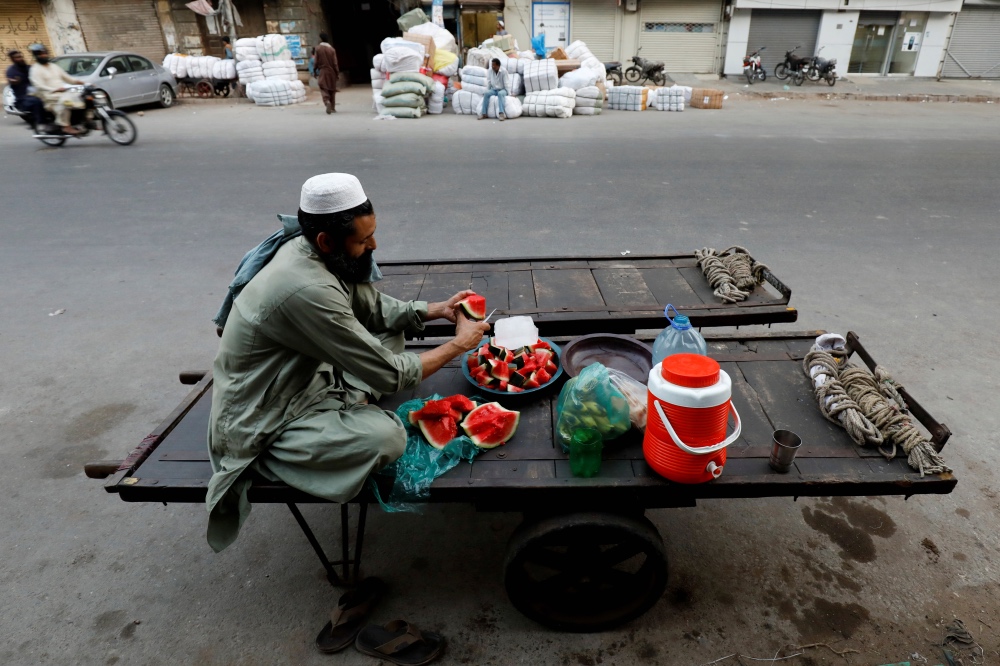Rome, Italy
Thomson Reuters Foundation
At least one in five people could not afford science’s ‘ideal diet’ designed to feed 10 billion people without hurting the planet, according to a study published on Friday.
The EAT-Lancet report made headlines when it was unveiled in January because it proposed the first scientific targets for both a healthy diet and a sustainable food system.

A labourer prepares fruit plates on his push cart before breaking fast during the fasting month of Ramadan along a road in Karachi, Pakistan, on 8th May. PICTURE: Reuters/Akhtar Soomro
It recommended people double their intake of nuts, fruit, vegetables and legumes, and eat half as much meat and sugar to prevent millions of early deaths, cut greenhouse gas emissions and preserve land, water and biodiversity.
The Global Burden of Disease study by the US-based Institute for Health Metrics and Evaluation said poor diets killed 11 million people – one in five – in 2017, more than smoking, which kills about eight million people a year.
Agriculture, forestry and other land use accounted for 23 per cent of total net man-made greenhouse gas emissions from 2007 to 2016, soaring to 37 per cent when pre- and post-production activity were factored in, according to the United Nations.
The ‘ideal diet’ – projected to be in place by 2050 – would keep people and planet healthy, said the Lancet. But it would cost an average $2.84 per head per day, said researchers from the International Food Policy Research Institute and Friedman School of Nutrition Science and Policy at Tufts University.
This amounts to nearly 90 per cent of a household’s daily per capita income in poorer countries, pushing the regime beyond reach for nearly 1.6 billion people, mostly in sub-Saharan Africa and South Asia, they said in a paper in The Lancet Global Health.
“The actual number must be higher, since people need to spend at least some money on other things such as housing and clothing, as well as education, healthcare and transportation,” senior author Will Masters told the Thomson Reuters Foundation.
“For the poorest people, solutions to malnutrition will require economic change,” said Masters, citing higher incomes and lower food costs.
Beans, lentils, cowpeas, some vegetables and cereals are easier to find and cheaper in most countries than foods recommended in the EAT-Lancet diet such as eggs, fish, meat and fruits, but they are “not as delicious or desirable,” he said.





